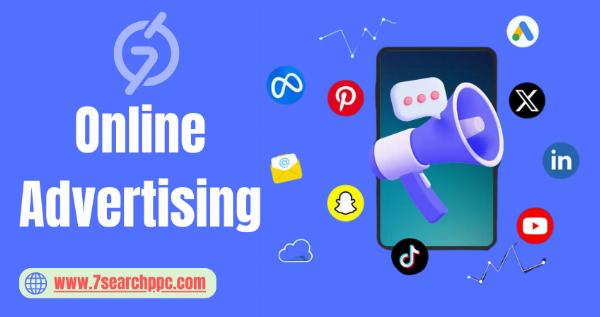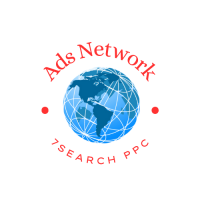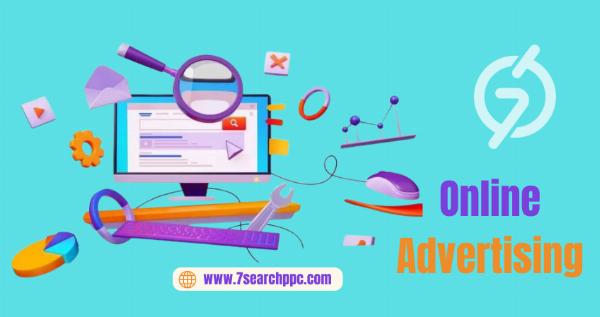Online Advertising: Examples & Advertisement Statistics

Strong 8k brings an ultra-HD IPTV experience to your living room and your pocket.
In today's digital age, online advertising has become an essential component of any successful marketing strategy. But what exactly is online advertising? At its core, online advertising involves using the internet to deliver promotional messages to consumers. This form of advertising leverages various online channels and platforms to reach a broad audience, making it a powerful tool for businesses of all sizes.
Types of Online Advertising
Search Engine Advertising
When you think of online advertising, search engine advertising is likely one of the first things that come to mind. This type of advertising involves placing ads on search engine results pages (SERPs). The most popular platforms for search engine advertising are Google Ads and Bing Ads.
Google Ads
Google Ads allows businesses to bid on keywords relevant to their products or services. When users search for these keywords, the ads appear at the top or bottom of the search results.
Bing Ads
Similar to Google Ads, Bing Ads offers businesses the opportunity to place ads on Bing's search engine results pages. While it has a smaller audience than Google, Bing Ads can still be a valuable platform for reaching potential customers.
Social Media Advertising
Social media platforms have become prime real estate for online advertising. Each platform offers unique advertising opportunities tailored to its user base.
Facebook Ads
Facebook Ads allow businesses to target users based on demographics, interests, and behaviors. With a variety of ad formats, including image, video, and carousel ads, businesses can create engaging content that resonates with their audience.
Instagram Ads
As a visual platform, Instagram is perfect for businesses that rely on high-quality images and videos to promote their products. Instagram Ads can appear in users' feeds, stories, and explore pages.
Twitter Ads
Twitter Ads enable businesses to promote tweets, accounts, and trends to reach a broader audience. With targeting options based on keywords, interests, and follower demographics, Twitter Ads can help businesses engage with potential customers in real-time.
LinkedIn Ads
LinkedIn Ads are ideal for B2B marketing. Businesses can target professionals based on job title, industry, and company size, making LinkedIn a valuable platform for reaching decision-makers.
Display Advertising
Display advertising involves placing visual ads on websites across the internet. These ads can come in various formats, including banner ads and pop-up ads.
Banner Ads
Banner ads are rectangular ads that appear at the top, bottom, or sides of a webpage. They can be static or animated and are designed to catch the user's attention.
Pop-up Ads
Pop-up ads are windows that appear over the main content of a webpage. While they can be intrusive, they are effective at grabbing the user's attention and prompting immediate action.
Video Advertising
Video advertising is a powerful way to engage users with dynamic content. The most common platform for video advertising is YouTube.
YouTube Ads
YouTube Ads can appear before, during, or after videos on the platform. With targeting options based on user interests and behaviors, businesses can reach a highly engaged audience.
In-Stream Ads
In-stream ads are short video ads that play before or during other video content. They are designed to capture the user's attention quickly and convey the message within a few seconds.
Native Advertising
Native advertising involves creating ads that blend seamlessly with the content on the platform. These ads are less intrusive and can be more engaging for users.
Sponsored Content
Sponsored content is a form of native advertising where businesses pay to have their content featured on a platform. This content is designed to match the style and tone of the platform, making it more appealing to users.
Email Advertising
Email advertising involves sending promotional messages directly to users' inboxes. This can include newsletter ads and promotional emails.
Newsletter Ads
Newsletter ads are placed within email newsletters sent to subscribers. These ads can be highly targeted based on the subscribers' interests and behaviors.
Benefits of Online Advertising
Wider Reach
Online advertising allows businesses to reach a global audience. With billions of internet users worldwide, businesses can expand their reach far beyond their local markets.
Cost-Effectiveness
Compared to traditional advertising methods, online advertising can be more cost-effective. Businesses can set their own budgets and only pay when users interact with their ads.
Targeted Advertising
One of the biggest advantages of online advertising is the ability to target specific audiences. Businesses can use demographic, geographic, and behavioral data to ensure their ads reach the right people.
Measurable Results
Online advertising platforms provide detailed analytics, allowing businesses to track the performance of their ads in real-time. This data can help businesses make informed decisions and optimize their campaigns for better results.
Increased Engagement
Online ads can be interactive and engaging, encouraging users to take action. Whether it's clicking on an ad, watching a video, or filling out a form, online advertising can drive higher levels of engagement compared to traditional methods.
Challenges of Online Advertising
Ad Blockers
Many users employ ad blockers to avoid seeing ads online. This can reduce the effectiveness of online advertising campaigns and limit their reach.
High Competition
With so many businesses advertising online, the competition for users' attention is fierce. Businesses need to create high-quality, engaging ads to stand out from the crowd.
Privacy Concerns
Online advertising relies heavily on user data for targeting. However, privacy concerns and regulations like GDPR can limit the amount of data businesses can collect and use.
Ad Fatigue
Users are exposed to countless ads every day, leading to ad fatigue. This can cause users to ignore or become annoyed by ads, reducing their effectiveness.
Online Advertising Statistics
Global Ad Spend
In recent years, global spending on online advertising has grown exponentially. According to eMarketer, digital ad spending is expected to reach over $600 billion by 2024, accounting for more than half of total media ad spend.
Return on Investment (ROI)
Online advertising often delivers a high ROI, with businesses seeing significant returns on their ad spend. For example, Google Ads reports an average ROI of $2 for every $1 spent.
Click-Through Rates (CTR)
Click-through rates (CTR) vary by platform and ad format. For example, the average CTR for Google search ads is around 3.17%, while display ads typically have a lower CTR of 0.46%.
Conversion Rates
Conversion rates also vary by platform and industry. On average, Google search ads have a conversion rate of 4.40%, while display ads have a conversion rate of 0.57%.
Successful Online Advertising Campaigns
Case Study: Nike's "Just Do It" Campaign
Nike's "Just Do It" campaign is a prime example of successful online advertising. By leveraging social media platforms and engaging storytelling, Nike was able to connect with their audience on a personal level and drive significant engagement.
Case Study: Coca-Cola's Personalized Bottles Campaign
Coca-Cola's personalized bottles campaign, also known as the "Share a Coke" campaign, used targeted social media ads and user-generated content to create a buzz. This campaign not only increased sales but also strengthened brand loyalty.
Future Trends in Online Advertising
Artificial Intelligence and Machine Learning
AI and machine learning are set to revolutionize online advertising. These technologies can analyze vast amounts of data to optimize ad targeting, improve ad performance, and deliver personalized content.
Personalization and Customization
Personalization will continue to be a key trend in online advertising. By delivering personalized ads based on user preferences and behaviors, businesses can create more meaningful connections with their audience.
Influencer Marketing
Influencer marketing is expected to grow, with more businesses partnering with influencers to promote their products. Influencers can help businesses reach niche audiences and build trust with potential customers.
Interactive Ads
Interactive ads, such as quizzes, polls, and augmented reality experiences, will become more popular. These ads encourage users to engage with the content, making the advertising experience more enjoyable.
Conclusion
Online advertising has become an indispensable tool for businesses looking to reach a wider audience, engage with potential customers, and drive sales. While there are challenges to overcome, the benefits of online advertising make it a worthwhile investment. As technology continues to evolve, we can expect to see even more innovative and effective online advertising strategies in the future.
FAQs
What is online advertising?
Ans. Online advertising is the practice of using the internet to deliver promotional messages to consumers. This can include various forms of advertising, such as search engine ads, social media ads, and display ads.
How does online advertising work?
Ans. Online advertising works by placing ads on various online platforms, such as search engines, social media sites, and websites. These ads are targeted to specific audiences based on demographic, geographic, and behavioral data.
What are the different types of online advertising?
Ans. The different types of online advertising include search engine advertising, social media advertising, display advertising, video advertising, native advertising, and email advertising.
How can businesses measure the success of their online advertising campaigns?
Ans. Businesses can measure the success of their online advertising campaigns by tracking metrics such as click-through rates (CTR), conversion rates, and return on investment (ROI). Online advertising platforms provide detailed analytics to help businesses make data-driven decisions.
What are the future trends in online advertising?
Ans. Future trends in online advertising include the increased use of artificial intelligence and machine learning, greater personalization and customization of ads, the growth of influencer marketing, and the rise of interactive ads.
Note: IndiBlogHub features both user-submitted and editorial content. We do not verify third-party contributions. Read our Disclaimer and Privacy Policyfor details.



